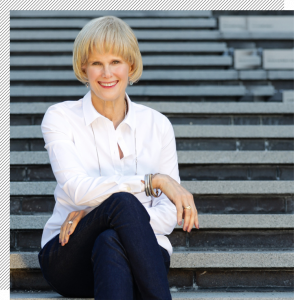We’ve been telling stories since the beginning of time. Whether to entertain, emphasize a point or convey a lesson, stories are universal. And eventually, brands discovered the art of brand storytelling — an important tactic to draw in and connect with customers. Storytelling is a marketing tactic we all need to use — and we’re going to talk about how.
In this article we’re going to answer the question, what is brand storytelling, review frameworks you can use and examine brand storytelling examples that will help you rock your storytelling goals.
What is Brand Storytelling & Why It’s Important?
Brand storytelling is the art of telling real, authentic stories that tug at people’s emotions with the goal of drawing them closer to that brand.
Why is this important to your brand?
As humans, we run on stories. Even if we’re not conscious of it, a well-told story from a brand helps us to identify with that brand and draws us closer.
As an example of just how powerful this is, think of Apple’s founder, Steve Jobs. Sure, he created an incredible technology brand that brought you many of the staples you use everyday. But you don’t just think of him as a technology mogul. You think of his founding story — his struggle of dropping out of college, working with a friend out of his family home, and fighting against competitors to bring his product to market.
It’s a whirlwind story, for sure! Heck, Hollywood even turned his story into a movie, which shows just how emotionally impactful it is.
Without that story, Apple is just another tech brand. But with it, we empathize and connect with the brand on an emotional level that doesn’t exist with other brands.
And that’s what we want for your brand.
Let’s now look at four specific and proven storytelling frameworks that will help you formulate and button down your brand story so that it works for your brand.
Brand Storytelling Tactics: 4 Compelling Frameworks That Really Work
1. The 3-Act Story
The three-act story is perhaps one of the simplest formulas for storytelling — and its continued success shows the power of its simplicity.
As the name suggests, this story happens in three distinct stages:
- The Setup: You set the scene and introduce the characters.
- The Confrontation: You present the problem and build tension.
- The Resolution: You are able to solve the problem and everyone lives happily ever after.
Example of this for Brands:
Take as an example Land Rover’s story of the Land of Land Rovers.
In its video ad, Land Rover shows a small, remote village in the Himalayas. You meet the people of that village and hear them talk about it fondly (the setup). Then you hear about the treacherous journey they need to take to Sandakphu, a village that is located at an altitude of 3,636 meters (the confrontation).
To take this journey, they trust a fleet of 1957 Land Rovers, which always get the job done (the resolution). It’s a powerful story that conveys the reliability and durability of the Land Rover brand.
2. The 5-Act Story
This framework is similar to the first one but, with more depth and complexity. Sometimes referred to as Freytag’s Pyramid, this framework was first discussed by German author Gustav Freytag. He made a study of popular dramatic plays in the mid-1800s and created this framework as a model for the perfect story.
This framework generally goes like this:
- Exposition: You explain key background information.
- Rising Action: A series of events that leads the main characters to the climax.
- Climax: The exciting part where the story gets turned around and complicated.
- Falling action: The story after the climax, where the characters wrap things up on their way to the finale.
- Denouement: You end the story with a flourish. This could be a resolution, a tragic catastrophe, or a revelation.
Example of this for Brands:
We see a great example of this five act story in Charles Schwab’s campaign, Women & Investing, which seeks to destroy long-held stereotypes that financial investment is a “man’s game.” The campaign does this by sharing stories of everyday women who have become investors.
Consider Schwab’s video interview with a young woman named Kim. Schwab lays the foundation by showcasing her background (exposition). She talks about the financial stress that her parents experienced and her rise to financial literacy (rising action), which resulted in starting a business with her husband (climax). As she thinks about her coming retirement as a self-employed individual (falling action), she makes the resolution to invest in her future (denouement).
3. The Hero’s Journey
The hero’s journey framework is another classic structure. Once you learn this framework, you will probably see it used in some of your most favorite stories — and even in your own life.
Here is the Hero’s Journey, broken down into 12 steps:
- Ordinary World – Your characters are just living their best life.
- The Call to Adventure – Something happens to pull your main character away from normal life.
- The Refusal of the Call – Your character hesitates.
- Meeting the Mentor – Someone comes along to change your character’s mind.
- Crossing the Threshold – Your character decides to answer the call.
- Trials, Allies, and Enemies – All the things that happen to your character along the way.
- The Approach – The moment before the climax, where your character weighs everything at stake.
- The Ordeal – This is a kind of climax, the exciting part where the fight happens and things come to a head.
- The Reward – Your character wins the fight and achieves the reward they’ve been seeking — but it proves not to be enough.
- The Road Back – Your character starts his or her way back to their ordinary world, feeling dissatisfied with the result.
- The Resurrection – The actual climax, where your character undergoes a form of death or inner change. It’s as if the character become a new person.
- The Return with the Elixir — Your character brings new insights back to his or her everyday life.
Example of this for Brands:
Airbnb used this framework ingeniously in their “Belong Anywhere” campaign. This campaign changed the narrative of the brand from a booking service that connected people with places to stay and transformed it into a knight in shining armor. Airbnb helped customers with their travel anxieties and woes by connecting them with sage hosts there to help them and enrich their experience.
This “Belong Anywhere” campaign presents us with weary travelers leaving an ordinary life for an adventure. The travelers hesitates, not sure if they’re ready— but Airbnb acts as mentor, offering a seamless process.
The travelers arrive at their host’s home (the reward), thinking this would be their ultimate reward. As they continue their stay, their hosts exposes them to new and exciting local experiences that fulfill them in a way they hadn’t thought of before (the resurrection). They return home with a new appreciation for the world beyond their community.
4. The Pixar Method
This framework was outlined by one of Pixar’s foremost storytellers, Emma Coates. In talking about what makes Pixar movies so poignant and successful, she revealed this simple formula of phrases she likes to use as she storyboards:
- Once upon a time _______________
- Every day __________________
- Then one day ______________
- Because of that, __________________
- And because of that, __________________
- And finally, _____________________
Example of this for Brands:
Google is probably one of the leading experts in brand storytelling.
Its 2009 Parisian Love ad was only 52 seconds long the view of only a computer screen, but was one of the most emotionally stimulating ads I have ever seen.
This ad starts out with a once upon a time story intro of a boy who wants to travel — yet we see nothing but the Google search query “study abroad in France.” Next comes a string of Google searches, all set to music and various sound effects, with queries ranging from how to impress a French woman, to chocolates and French culture. Then the queries evolves into matters of long distance relationship advice, airplane tickets, and churches. And finally, we see the query about how to assembly a crib — a complete story that all plays out through Google searches!
This was a genius way of telling a story of how Google helps us every day of our lives, without once telling us to use its products.
What Should You Take Away from This Lesson on Brand Storytelling?
Many of us would never attribute the title of “storyteller” to ourselves — and perhaps you feel this stops you from using these frameworks. But I urge you to look past this title. All of us have the innate capacity for storytelling. It’s just about looking at your history, product, and passions, and distilling it into one of these simple frameworks.
I hope these brand storytelling examples and strategies help you to succeed in penning your own brand’s story. Whether it’s your founding story, how your brand struggled in its rise to success, or the stories of how your brand has helped your audience, how you tell that story matters.
You May Also Enjoy Reading...





